
Corn planting can be more than just rows. You can try new ways to plant corn to get more from your garden. This can help you use space and water better.
Want to know a secret to a super productive garden? Try block planting or spiral planting, they are really cool.
You can learn about 15 amazing ways to plant corn and make your garden the best it can be.
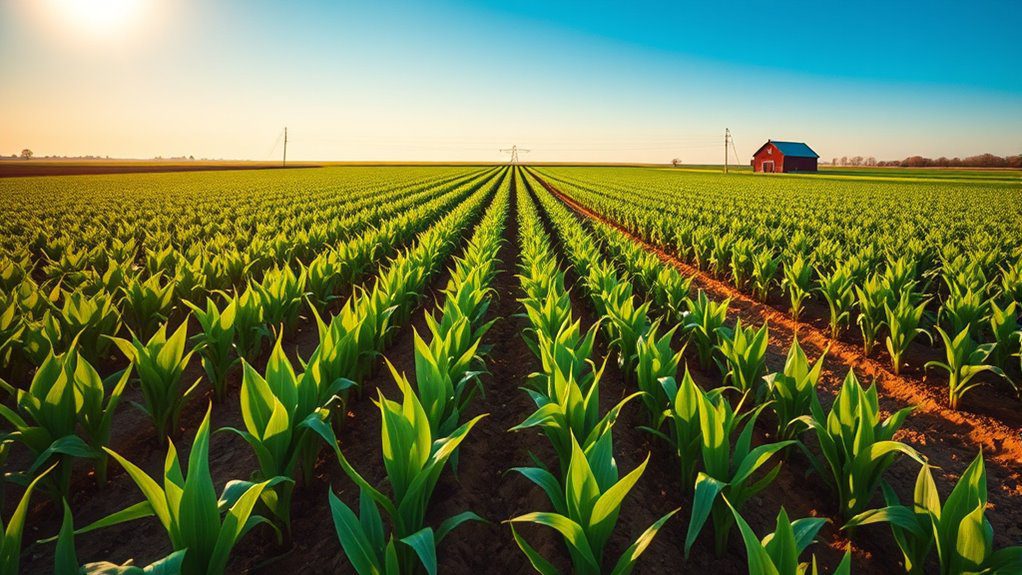
Traditional row planting is the most common method of corn cultivation, where seeds are sown in straight lines, spaced evenly apart. This formation allows for efficient cultivation, easier crop management, and ideal sunlight exposure for each plant. Typically, rows are spaced 30 inches apart, accommodating modern farming equipment. This method facilitates irrigation and weed control, contributing to higher yields and improved overall productivity in corn farming.
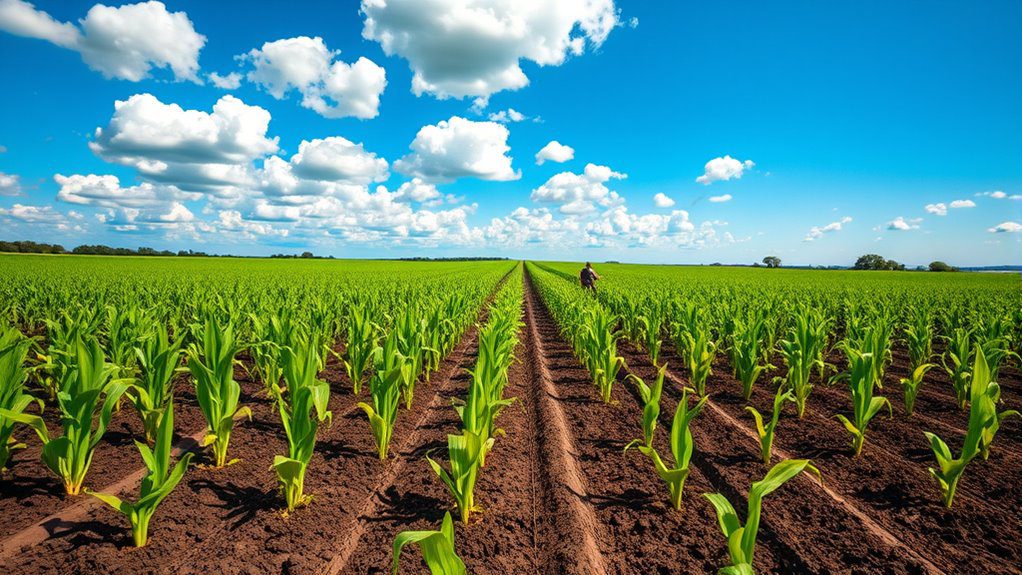
Block planting is a method where corn is sown in uniform, square patches or blocks within the field. This technique offers several advantages, including easier management of irrigation and pest control, as well as optimized use of resources. It allows for efficient planting and harvesting processes, while also facilitating crop rotation practices. By creating a concentrated area for growth, block planting can enhance the overall productivity and health of the corn crop.
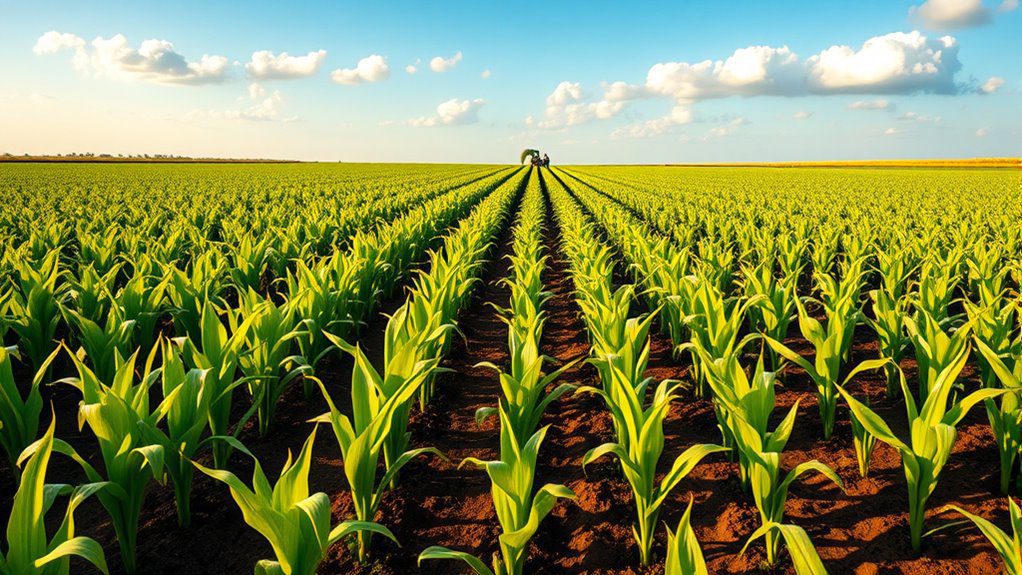
Grid planting is a precision farming technique that involves arranging corn plants in a grid formation across the field. This method optimizes space and resource use by ensuring uniform spacing and alignment, which can lead to increased sunlight exposure and nutrient uptake. Grid planting allows farmers to monitor crop growth more effectively, enhancing productivity and reducing waste. By implementing this systematic approach, farmers can maximize yields while maintaining sustainable practices.

Hexagonal planting is an innovative agricultural technique that optimizes space utilization and enhances crop yield. In this formation, corn plants are arranged in a hexagonal grid rather than the traditional rows. This method allows for closer planting, improving light exposure and decreasing competition among plants for water and nutrients. The hexagonal layout also facilitates better airflow, reducing the risk of disease. Overall, this formation can lead to healthier crops and higher productivity in corn cultivation.

Contour planting is an agricultural practice that involves planting crops along the natural contours of the land, rather than in straight rows. This method helps reduce soil erosion and water runoff by following the landscape’s natural shape, allowing water to infiltrate the soil more effectively. By creating furrows that act as barriers, contour planting retains moisture and improves soil health, making it particularly beneficial for areas with slopes or uneven terrain. This technique promotes sustainable farming and increases crop yields over time.
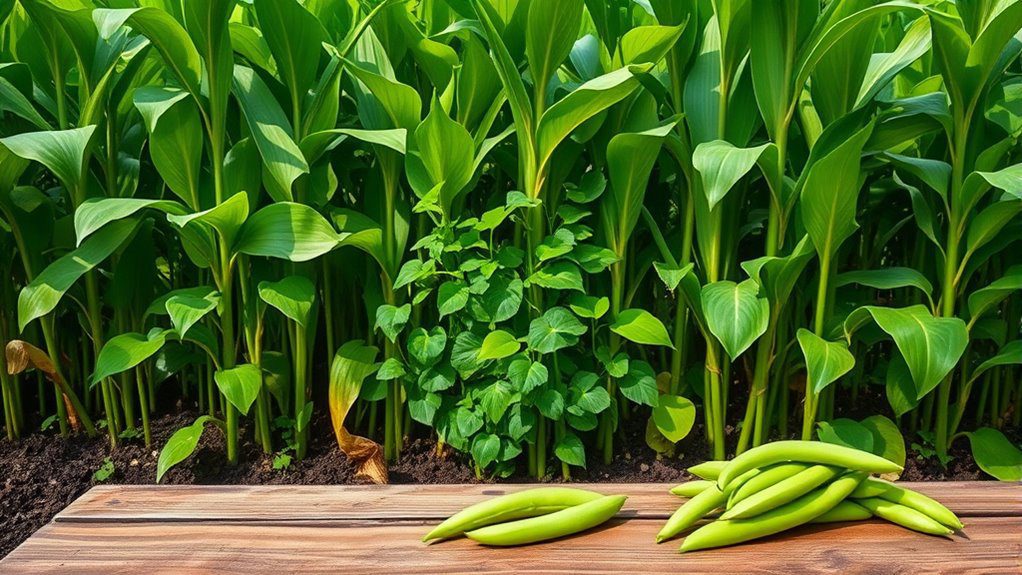
Intercropping corn with beans is a sustainable agricultural practice that maximizes space and improves soil health. Beans, being legumes, fix nitrogen in the soil, benefiting the corn’s growth and reducing the need for chemical fertilizers. This combination enhances biodiversity and can help to control pests and diseases, creating a more resilient ecosystem. Additionally, the differing growth patterns of both crops allow for efficient use of sunlight and resources, ultimately leading to higher overall yields.
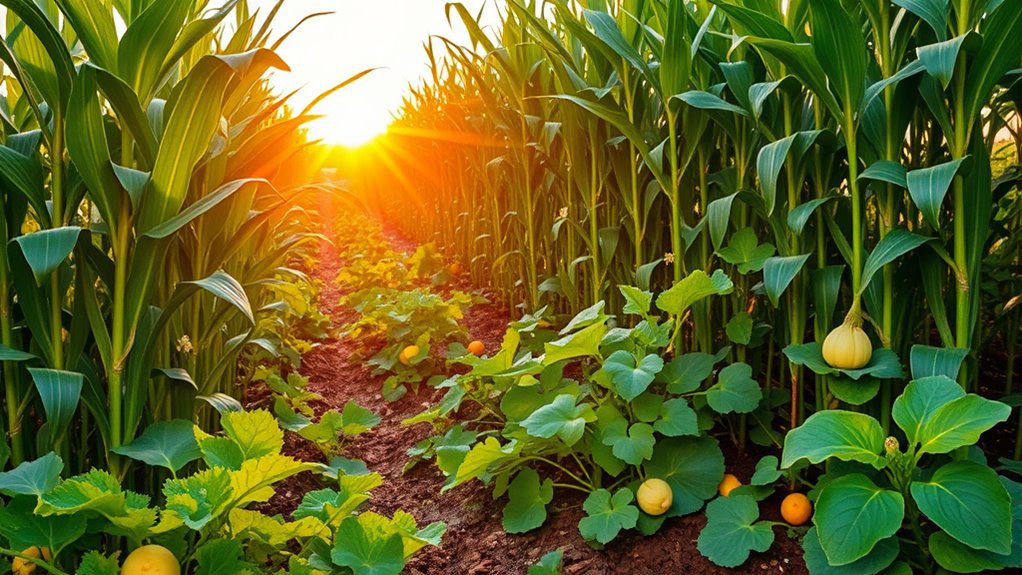
The Three Sisters planting method is a traditional agricultural practice used by Indigenous peoples of North America, emphasizing the intercropping of corn, beans, and squash. This symbiotic trio benefits each other; the corn provides support for the climbing beans, beans enhance soil fertility by fixing nitrogen, and squash covers the ground to suppress weeds and retain moisture. This method promotes biodiversity, maximizes crop yield, and fosters sustainable farming practices. It’s a harmonious approach to cultivation that reflects ecological principles.

Companion planting with sunflowers can enhance corn growth by providing support and attracting beneficial insects. Sunflowers grow tall and can act as natural windbreaks for corn, helping to reduce stress on the plants. Additionally, their vibrant flowers attract pollinators, which can improve corn pollination. The deep roots of sunflowers also help to improve soil structure and nutrient uptake, creating a more fertile environment for corn to thrive, making this pairing a beneficial strategy in agricultural practices.
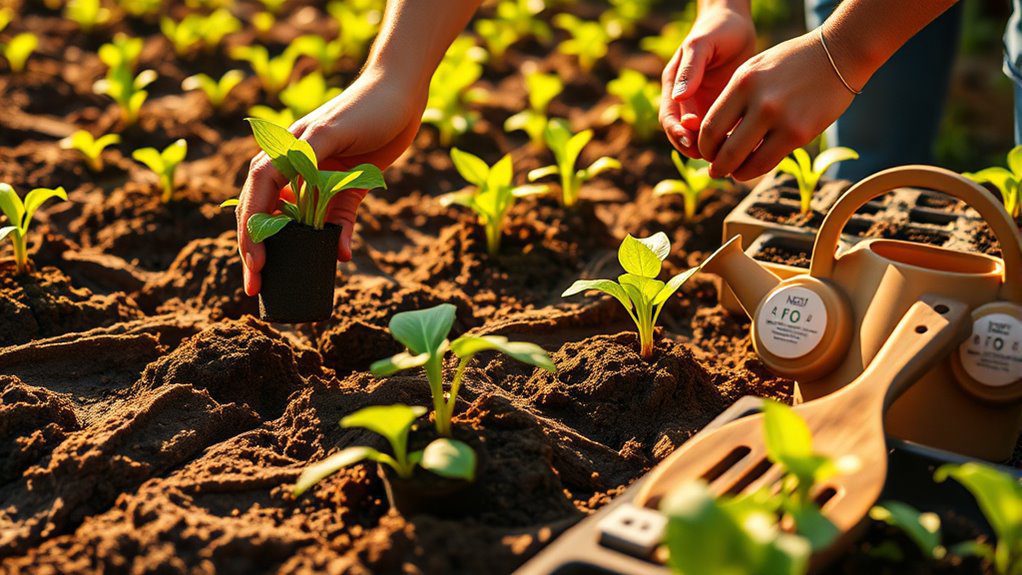
Transplanting seedlings is a crucial step in corn planting formations, promoting ideal growth and yield. After germinating seeds in controlled conditions, seedlings are carefully moved to the field, allowing adequate spacing for air circulation and sunlight exposure. This process minimizes root disturbance, promotes healthy development, and improves crop uniformity. Successful transplanting involves considering soil moisture, temperature, and timing to guarantee that seedlings establish effectively in their new environment, setting the foundation for a robust corn crop.
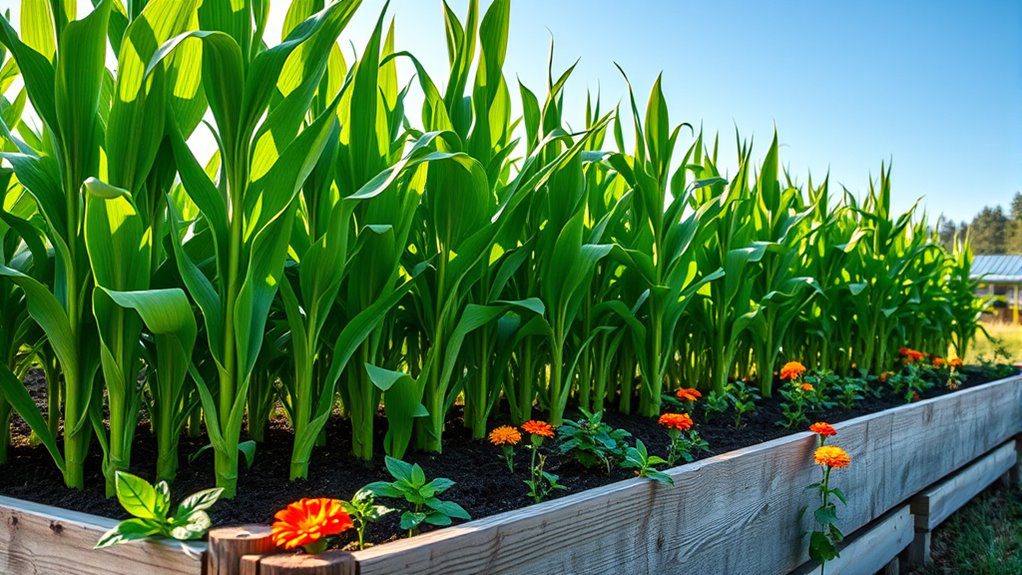
Raised bed planting for corn offers several advantages, including improved soil drainage and increased temperature, promoting healthier growth. By elevating the planting area, these beds reduce soil compaction and allow for better root development. Additionally, raised beds can facilitate easier access for planting, maintenance, and harvesting. This method also helps in managing weeds and pests more effectively, making it an excellent option for both experienced and novice corn growers looking to optimize yield.
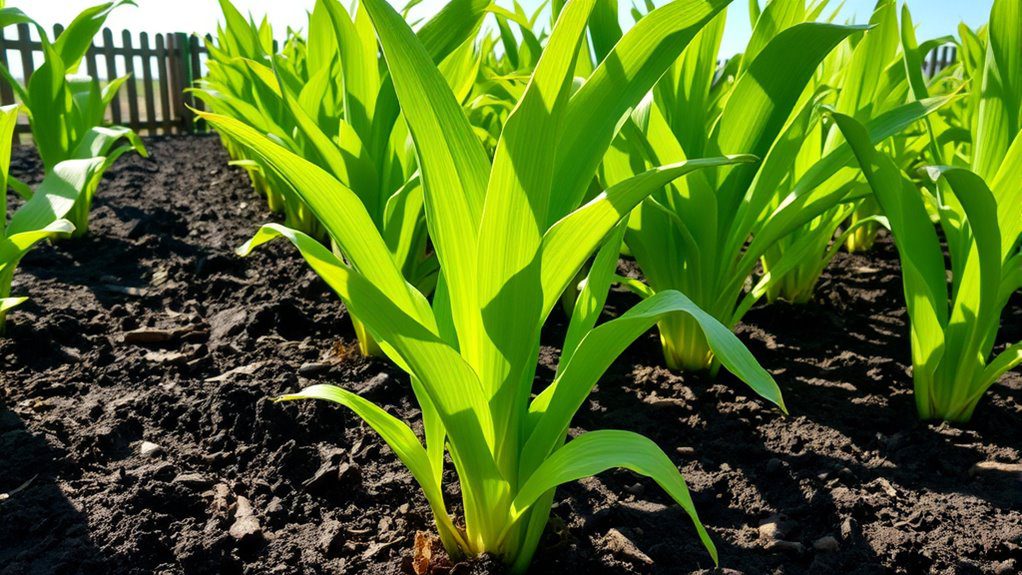
Hill planting is a method used in corn cultivation where seeds are grouped in small clusters or “hills” rather than being sown in single, straight rows. This technique allows for better space utilization and can improve access to sunlight and nutrients for each plant. Generally, several seeds are planted together in the same location, which promotes competition but can also lead to healthier, more robust crops. Hill planting is particularly effective in areas with limited moisture or uneven terrain.
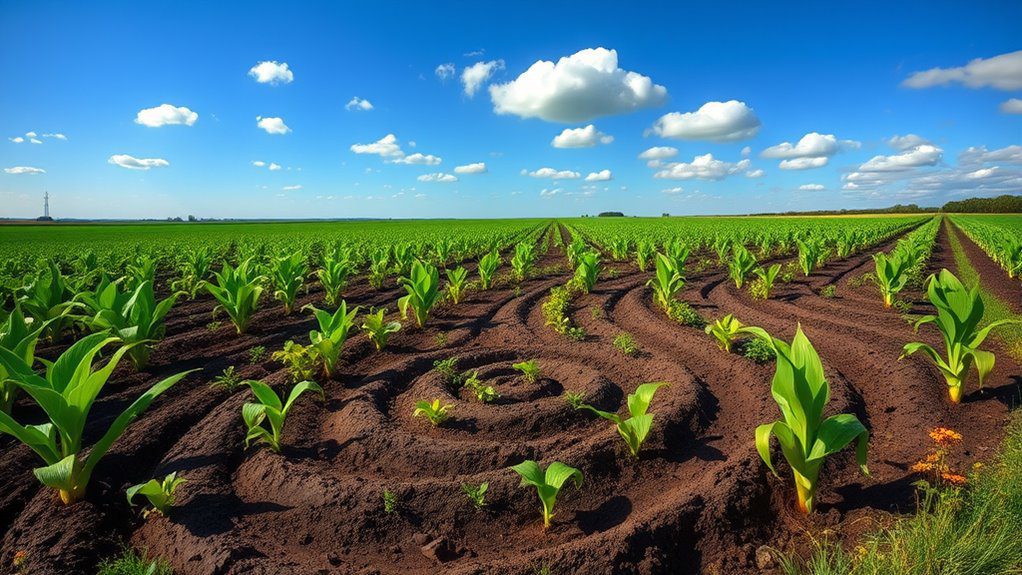
The spiral planting layout is an innovative approach to corn planting that maximizes space and promotes efficient growth. By arranging seeds in a spiral pattern, this formation allows for ideal light exposure and airflow, reducing competition among plants. The design also aids in soil conservation and water retention, leading to healthier crops. Implementing a spiral layout can enhance yield potential and improve overall farm productivity, making it a popular choice among modern farmers seeking sustainable practices.
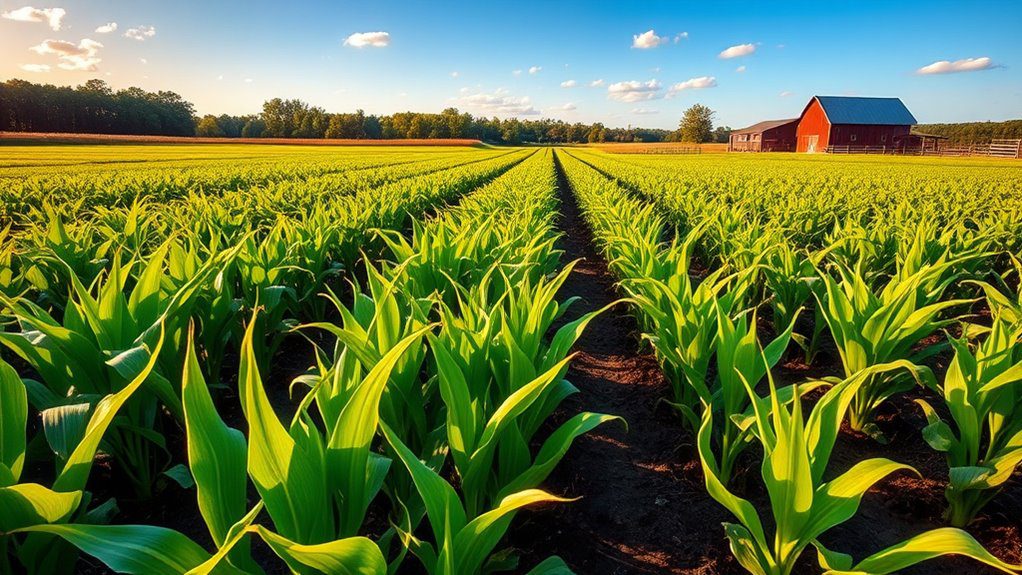
The Tiller Method for spaced rows involves planting corn in configurations that optimize light exposure and air circulation. This technique encourages the development of tillers, or secondary shoots, which can enhance overall crop yield. By spacing the rows appropriately, farmers can guarantee that each plant has sufficient room to grow, reducing competition for resources. This method is particularly effective in areas with high soil fertility, as it maximizes the growth potential of each corn plant.
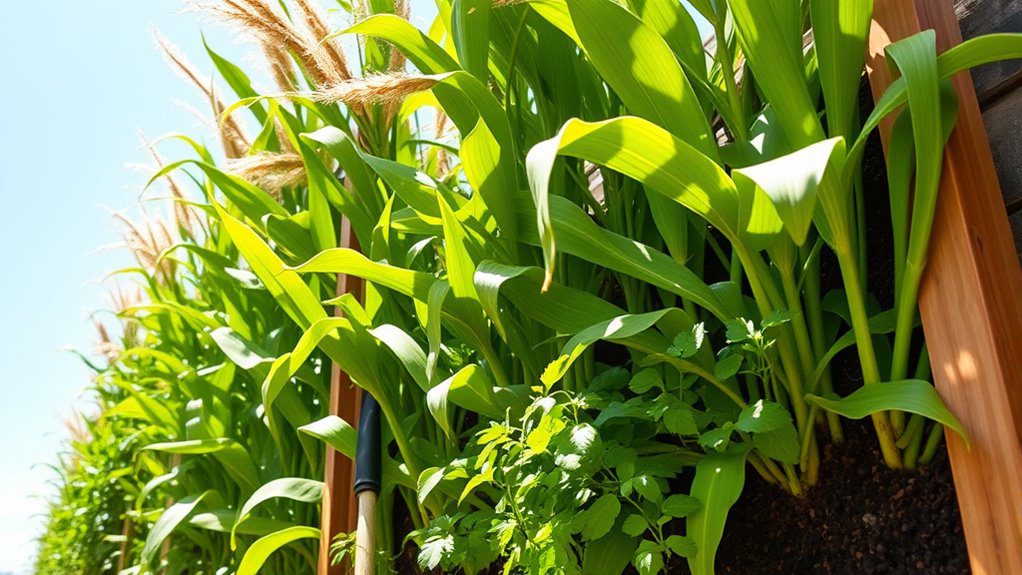
Vertical gardening techniques for corn planting involve utilizing vertical spaces to maximize yield in limited areas. By using trellises or vertical planters, corn can be grown upwards, allowing for better air circulation and sunlight exposure. This method also reduces soil pest issues and encourages a more efficient watering system. Additionally, vertical gardening can create an aesthetically pleasing environment while pushing the boundaries of traditional corn farming practices.
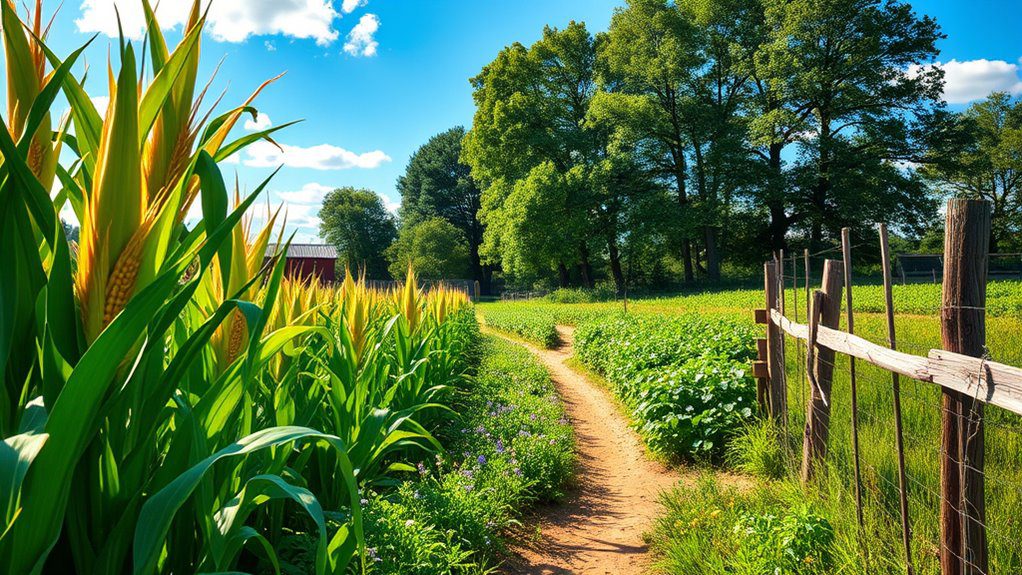
Alley cropping with corn involves planting rows of corn interspersed with rows of perennial crops or trees. This agroforestry practice enhances biodiversity, improves soil health, and reduces erosion while providing multiple harvests. The trees or shrubs create shade and reduce competition for nutrients, potentially increasing corn yield. Additionally, alley cropping can enhance overall farm sustainability and resilience by diversifying crops, optimizing land use, and creating a more balanced ecosystem.
By embracing these 15 innovative corn planting formations, you’re not just planting seeds; you’re weaving a vibrant tapestry of life in your garden. Picture lush rows swelling with golden kernels, spirals twisting elegantly towards the sun, and vibrant green leaves rustling in harmony with the breeze. Each technique invites you to dance with nature’s rhythms while maximizing productivity. So, dig in and let your garden flourish, creating a bountiful harvest that nourishes both body and soul.

Don't let aphids, slugs, and caterpillars ruin another plant. Take back control with simple, natural methods that actually work.